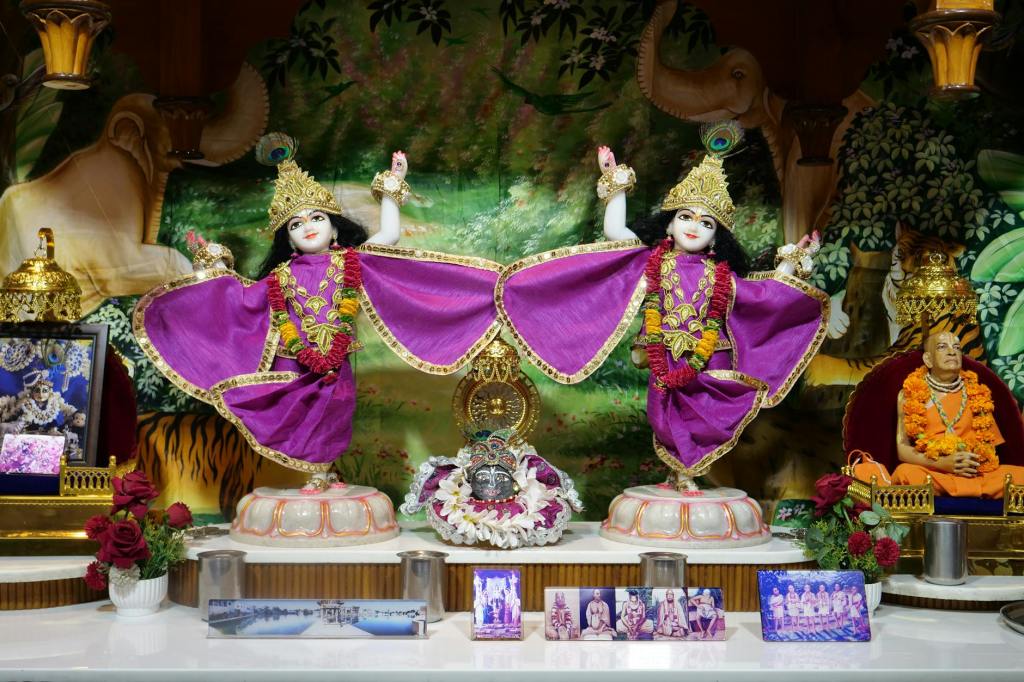Red is a powerful and dynamic color that holds significant importance in various aspects of life. In religion and spirituality, red is associated with sacrifice, love, passion, and good fortune. In psychology, red is often linked to strong emotions such as anger, love, and excitement. In design and art, red is used to grab attention and create a sense of urgency. In science, red is a visible color in the spectrum, with a longer wavelength than the other colors. In sports, red is often used to symbolize energy, power, and determination. Overall, red is a versatile color that holds a significant place in our cultural and personal experiences, with a wide range of symbolic meanings.
- Symbolic Meaning of Red
- Spiritual Meaning of Red Color
- Significance of Red color in the rainbow
- Scientific characteristics of red color
- Greatness of Red Color in Eastern Cultures
- Importance of Red Color in Western Cultures
- Spiritual Meaning of Red Clothes
- Conclusion
Read more on The Cowherd:
- Spiritual meaning of Green
- Spiritual meaning of Red
- Spiritual meaning of Yellow
- Spiritual meaning of Blue
- Spiritual meaning of colors
The spiritual meaning of red can vary among different cultures and belief systems, but some common interpretations include:
- In Christianity, red symbolizes the blood of Jesus Christ and is associated with sacrifice and love.
- In Hinduism and Buddhism, red is associated with passion, desire, and love. It is also the color of the first chakra, which is associated with the root of the spine and grounding energy.
- In Native American cultures, red represents the direction of the south and symbolizes courage, strength, and love.
- In China, red is considered a lucky color and is associated with happiness, prosperity, and good fortune.
Overall, red is often associated with strong emotions, energy, and life force.
Symbolic Meaning of Red
The symbolic meaning of red varies across cultures and contexts, but some common interpretations include:
- Passion and love: Red is often associated with intense emotions, such as love, desire, and romantic attraction.
- Danger and warning: Red is a color that is easily noticed, and it is often used to indicate danger, such as stop signs and traffic lights.
- Power and authority: Red is a bold and striking color, and it is sometimes used to symbolize power and authority, as in the case of red carpet events or the red robes worn by judges in some legal systems.
- Energy and excitement: Red is a vibrant and energetic color, and it is often used to convey excitement and enthusiasm.
- Strength and courage: Red is sometimes associated with strength, courage, and bravery, especially in warrior cultures.
Overall, the symbolic meaning of red can vary depending on the context, but it is generally associated with strong emotions, energy, and life force.
Spiritual Meaning of Red Color
In Hinduism, red is considered a powerful and auspicious color that holds significant spiritual and cultural meaning. Some of the most important symbolic meanings of red in Hinduism include:
- Signifies purity and spirituality: Red is associated with purity and spirituality in Hinduism, especially in the context of religious rituals and ceremonies. Hindu brides often wear red saris on their wedding day to symbolize purity, and red is used to decorate altars and create sacred spaces.
- Represents the goddesses: Red is associated with several powerful Hindu goddesses, including Durga, Kali, and Lakshmi, who are seen as protectors, nurturers, and bringers of wealth and prosperity.
- Signifies good fortune: Red is considered a lucky color in Hinduism and is often used to bring good fortune and prosperity. Red kumkum powder, for example, is often placed on the foreheads of Hindu devotees as a symbol of good luck and blessings.
- Conveys passion and desire: In Hindu mythology, red is often associated with desire and passion. Hindu gods and goddesses are often depicted wearing red clothes or adorned with red ornaments.
Overall, the significance of red in Hinduism is tied to its associations with purity, spirituality, goddesses, good fortune, and passion, making it an important color in Hindu culture and spirituality.
Red is a significant color in many aspects of life, including yoga, the rainbow, and science. Here is a detailed explanation of the importance of red color in each of these areas:
Spiritual meaning of Red color in yoga
In yoga, the color red is associated with the root chakra, also known as the Muladhara chakra. This chakra is located at the base of the spine and is associated with grounding, stability, and a sense of belonging. The color red is used to represent this chakra and its associated qualities, as it is thought to be grounding, warm, and energizing. In yoga practices, wearing red clothing, meditating on the color red, or visualizing a red light at the base of the spine can be used to help balance and activate the root chakra.
Significance of Red color in the rainbow
Red is one of the seven colors of the rainbow, and it is typically considered the first color of the rainbow spectrum. In light, red has a longer wavelength than the other colors, making it the first color visible in the rainbow. In this sense, red is associated with beginnings, new beginnings, and the start of a journey.
Scientific characteristics of red color
Red is a hue that is created by the combination of light waves of various lengths and intensities. In science, red is characterized by its spectral wavelength of around 630-740 nanometers. This wavelength is the longest of all the visible light colors and falls within the visible light spectrum. Red is also associated with heat, as it is the color of heat lamps and hot objects.
Greatness of Red Color in Eastern Cultures
Red is a color with a lot of symbolic meaning and importance in several religions, including Buddhism, Jainism, and Sikhism. Here is a more detailed explanation of the greatness of red color in each of these religions:
- Red color in Buddhism: In Buddhism, red is often associated with the first ray of dawn, symbolizing new beginnings, hope, and the triumph of wisdom over ignorance. The color red is also associated with the Buddhist deity, Amitabha, who is considered the embodiment of the compassionate aspect of Buddha. Amitabha is often depicted wearing red robes and is thought to be the source of all happiness and peace. In Buddhist practice, red is also used to symbolize passion and love, as well as anger and aggression, which are seen as obstacles to enlightenment.
- Red color in Jainism: In Jainism, red is associated with the color of the sky at dawn and symbolizes new beginnings, hope, and renewal. It is also linked to the Jain deity, Padmavati, who is seen as the protector of Jainism and is often depicted wearing red clothes. The color red is also used in Jain rituals and ceremonies to symbolize purity, wisdom, and spiritual development.
- Red color in Sikhism: In Sikhism, red is an important color that is often used in religious ceremonies and rituals. Red is associated with passion, courage, and strength, and it is also seen as a symbol of protection. In Sikhism, the red turban worn by Sikhs is considered a symbol of spiritual authority and devotion. Red is also used in the construction of Sikh places of worship, and it is used to decorate the walls and floors of the gurudwaras.
In conclusion, red is a color with significant spiritual and cultural importance in Buddhism, Jainism, and Sikhism. In each of these religions, red is associated with new beginnings, hope, renewal, and protection. Additionally, red is also linked to spiritual development, wisdom, and devotion, making it a symbol of spiritual significance and greatness in these religions.
Importance of Red Color in Western Cultures
Red is a color with a rich history and cultural significance in Western cultures. Here are some of the most common ways that red is used and perceived in Western societies:
- Emotions: Red is often associated with strong emotions, such as anger, passion, and love. For example, a red face can indicate anger, while a red heart is often used to symbolize love.
- Danger and warning: In Western cultures, red is often used to indicate danger or to provide a warning. For example, red lights on a traffic signal indicate that a driver should stop, while a red flag is used to indicate a dangerous or hazardous situation.
- Power and authority: Red is a bold and striking color, and it is often used to convey power, authority, and importance. For example, red carpets are often used to welcome VIP guests, while red uniforms are used to symbolize the military or emergency services.
- Love and passion: Red is also associated with love and passion, and it is often used to express these feelings. For example, red roses are a common symbol of love, while red lipstick and clothing are often used to express sensuality and sexuality.
- Holidays and celebrations: Red is also used to celebrate holidays and special occasions in Western cultures. For example, red is a prominent color during Christmas, and it is often used to decorate trees, homes, and gifts. Red is also used in other holidays and celebrations, such as Valentine’s Day, Chinese New Year, and National Flag Day.
- Sports: Red is also used in sports to symbolize energy, power, and determination. For example, many sports teams have red as one of their team colors, and athletes often wear red uniforms or accessories to boost their confidence and performance.
- Art and design: Red is also an important color in the world of art and design, and it is often used to grab attention and make a bold statement. For example, red is used in advertising and marketing to create a sense of urgency, while red is also used in painting and other forms of art to express emotions, feelings, and ideas.
Overall, red is a complex and versatile color that holds a significant place in Western cultures. From expressing strong emotions to symbolizing power and authority, red is used in many different ways to convey messages and express cultural values.
Spiritual Meaning of Red Clothes
Red clothing holds different spiritual meanings in different cultures and traditions. Here are some of the most common spiritual meanings of red clothing:
- Passion and energy: Red is often seen as a vibrant and dynamic color, and red clothing can be used to symbolize passion, energy, and vitality.
- Protection: In some cultures, red is believed to have protective properties, and red clothing can be worn to ward off negative energies or to bring good luck.
- Spirituality: In many religious and spiritual traditions, red is a sacred color that is associated with the divine. Red clothing can be used to symbolize spiritual devotion and to express a connection to a higher power.
- Power and authority: In some cultures, red clothing is seen as a symbol of power and authority, and it may be worn by leaders, priests, or other figures of importance.
- Love and sensuality: In some cultures, red is associated with love and sensuality, and red clothing can be used to express these feelings and to enhance one’s sexual attraction.
Overall, the spiritual meaning of red clothing can vary greatly depending on the context and cultural background, but it is often associated with passion, energy, protection, spirituality, power, and love.
Conclusion
In conclusion, the importance of red color can be seen in various aspects of life, including yoga, the rainbow, and science. In yoga, red is associated with the root chakra and grounding qualities. In the rainbow, red is the first color of the spectrum and is associated with new beginnings. In science, red is characterized by its spectral wavelength and is associated with heat. Regardless of the context, red is a vibrant and dynamic color that holds a significant place in our understanding of the world.






One response to “Spiritual Meaning of Red”
[…] Spiritual meaning of Red […]
LikeLike